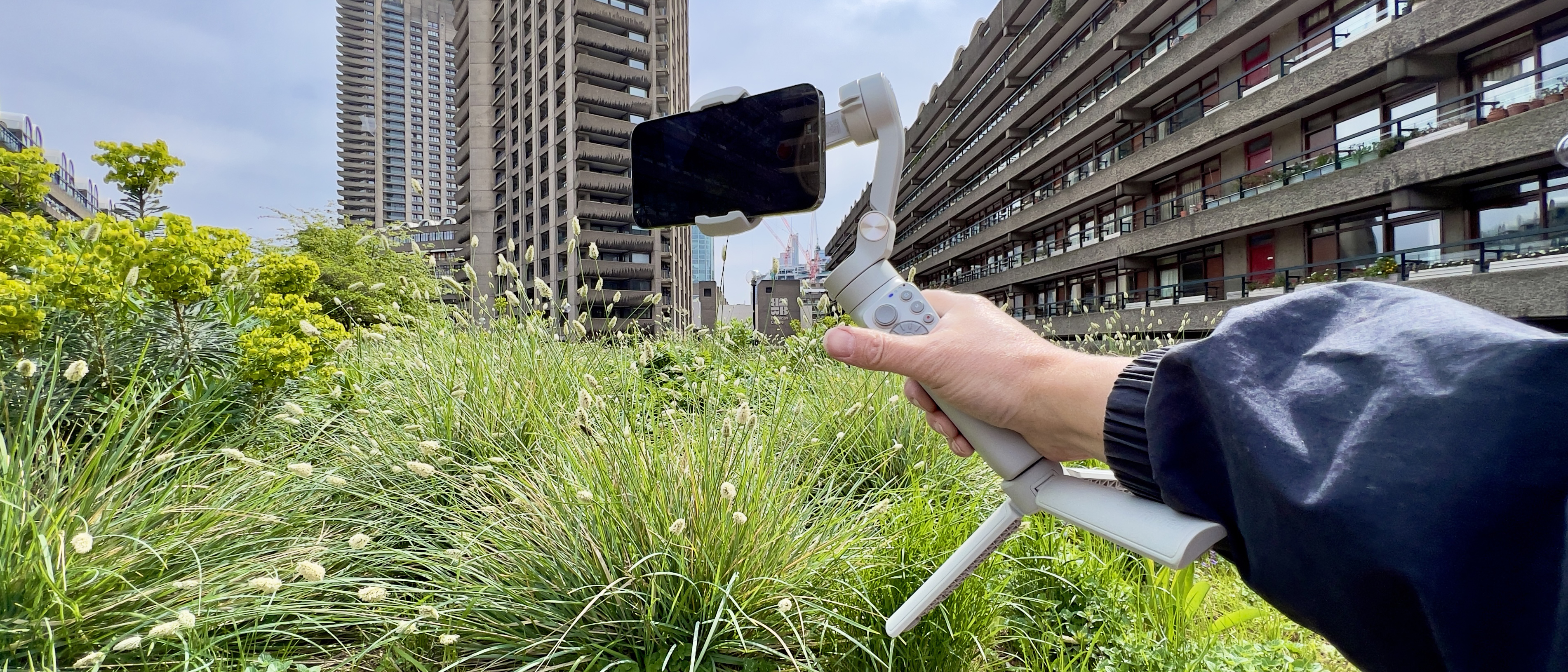Digital Camera World Verdict
This compact, lightweight and durable gimbal will have you panning, tilting and tracking your subjects like a Hollywood camera operator. Using your smartphone’s front-facing camera and the free Feiyu ON app, you can make the gimbal track your movement as you walk and talk and trigger the recording with a hand gesture. Some of the app’s panning timelapse features didn’t perform as well as we hoped but all in all this is an effective budget smartphone gimbal.
Pros
- +
Gliding movement (even shooting wide-angle)
- +
App controlled auto tracking
- +
Trigger recording via gestures
- +
Telescopic extension rod
Cons
- -
Hit and miss timelapse performance
- -
No mode display
Why you can trust Digital Camera World
The FeiyuTech Vimble 3 is a new arrival in the increasingly crowded smartphone gimbal market. Unlike the Zhiyun Crane M2S gimbal, the Vimble 3 doesn’t attempt to appeal to mirrorless and DSLR owners – it is aimed purely at the smartphone user.
In build and functionality, the Vimble 3 bears many similarities with the look and function of the DJI OM4. As with all gimbals, you can use a range of modes to make your smartphone pan, tilt and roll smoothly. Both the OM4 and the Vimble 3 have an accompanying app that enables them to perform a host of extra tricks, such as starting to record your actions when you make a specific gesture. More on that later.
Specifications
Battery Life: 10 hours approx
Charging: Via built-in USB C port
Weight: 387g/0.853lb (Not including mini tripod)
Dimensions (Unfolded): 300.7 x130.7 x 87.5mm
App: Feiyu ON
Extendable pole: 198mm
Max load: 250g
Key features
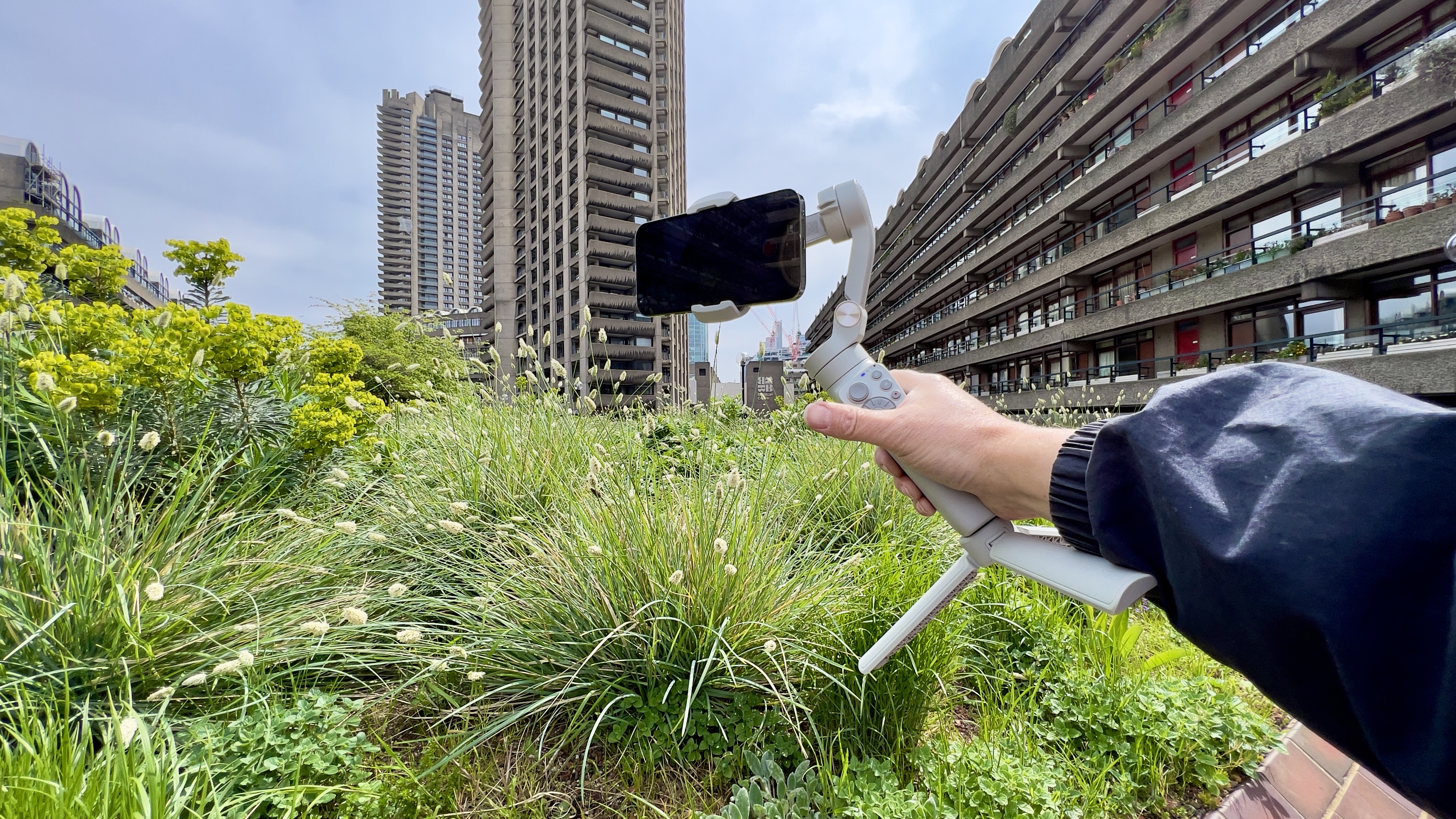
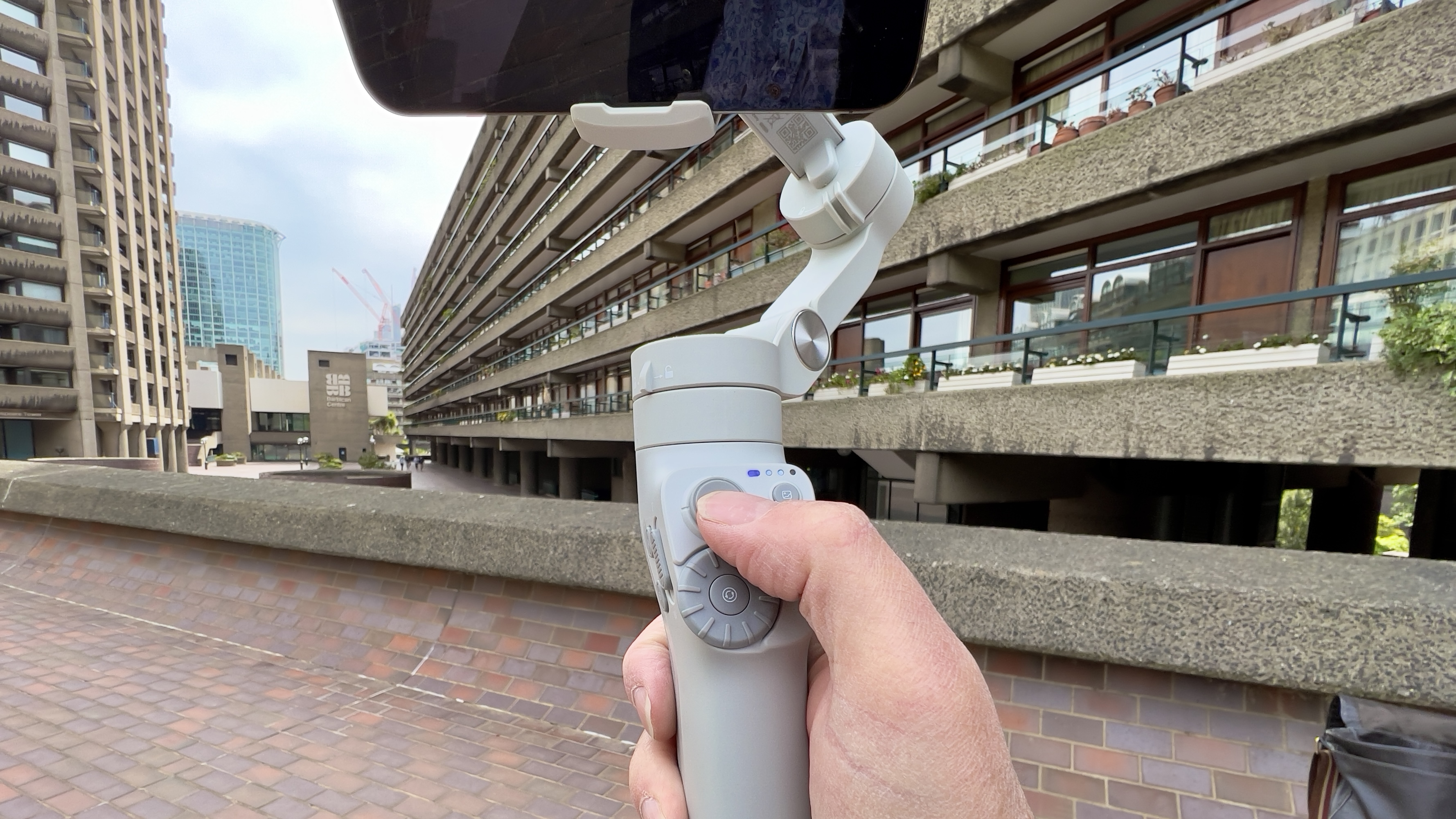
The Vimble 3 is a 3-axis gimbal that enables you to capture smooth smartphone camera moves such as tilts, rolls and pans.
Although many smartphones have built-in software and hardware stabilisation features, this doesn’t always apply to every lens. For example, on the iPhone 13 Pro Max the Ultra Wide camera isn’t stabilised, so you might need to smooth out wobbly handheld wide-angle moves in Final Cut Pro or Premiere Pro. This can involve the footage becoming cropped, which will spoil your original wide-angle composition.
The Vimble 3 produces smooth gliding camera moves even when shooting in wide-angle, as you’ll see from our supporting test video. When shooting selfies, you’re no longer limited by the length of your arm because the Vimble 3’s telescopic pole enables you to extend it by 198mm, enabling you to capture more of yourself and your environment.
You can toggle the Vimble through five different shooting modes. With Pan Follow (PF) the gimbal pans to follow the movement of the operator’s hands (but it won’t tilt). Pan Tilt Follow (PTF) is more intuitive, with the gimbal panning left or right as well as tilting up or down depending on your hand movement. The FPV mode causes all three axes to pan, tilt and roll according to your and movement. The Lock mode keeps the camera pointing in the same direction regardless of movement.
Finally, FFW is the Flash Follow mode that causes the gimbal to react more quickly to any move, making this a useful mode for shooting sports. You can also toggle between shooting in Portrait and Landscape orientation, which could be handy if filming content for a social media site such as TikTok.
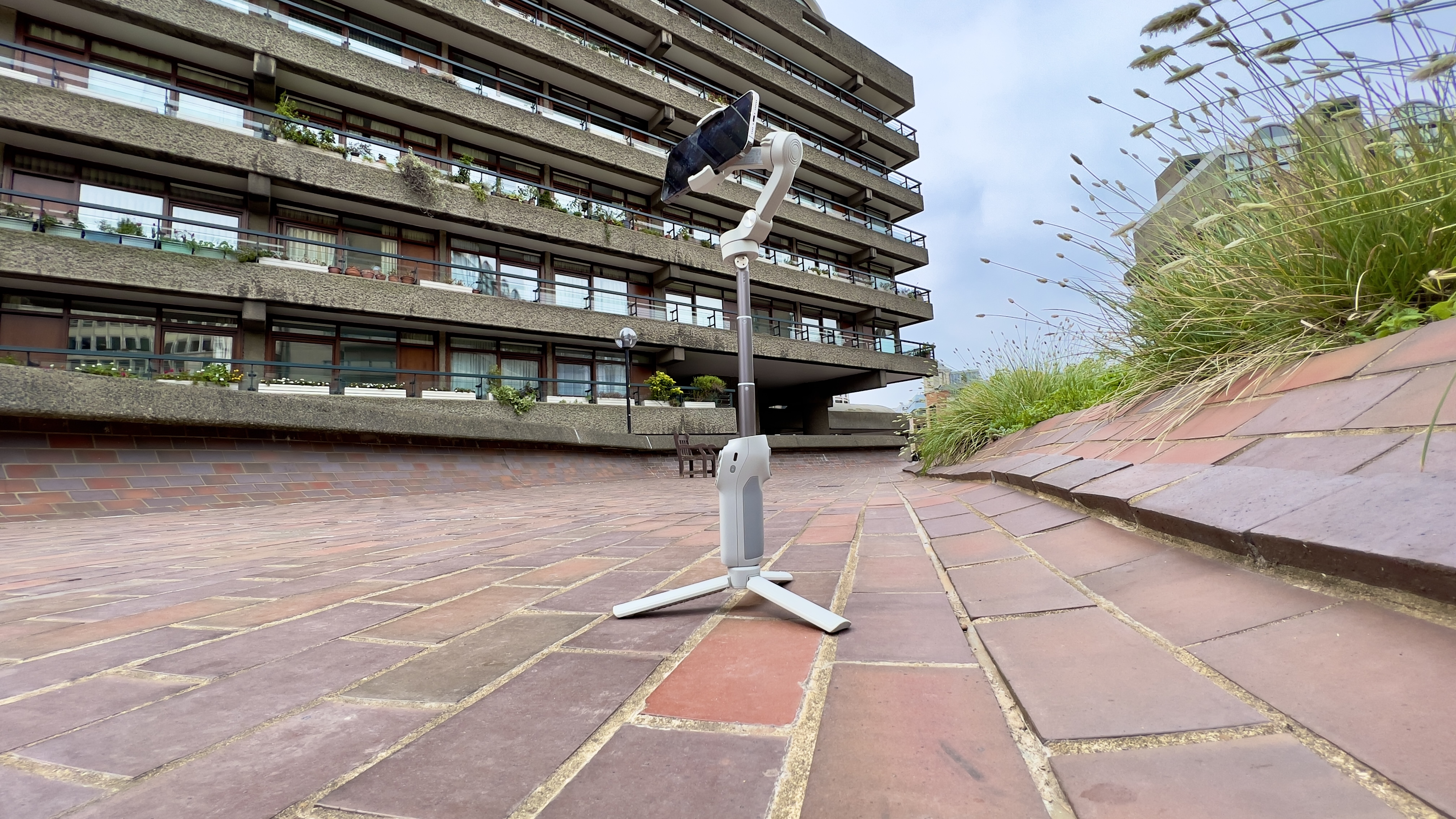
Thanks to an attachable mini tripod, you can also use the gimbal hands free. This is handy if you want to shoot a panning time-lapse for example.
You can expand the Vimble 3’s functionality by using the Feiyu ON app. This enables the gimbal-mounted smartphone to perform some amazing tricks, such as panning and tilting to follow your every move as you walk and talk. You can also draw on the smartphone’s screen to choose a subject and the gimbal will do its best to keep the designated subject in shot as it (or the gimbal’s operator) moves about.
We found the auto tracking pins and tilts were perhaps a little abrupt and sluggish but they gave the camera moves the human touch (rather than being super responsive and artificially smooth). Take a look at our test video to see the app’s auto tracking features in action.
Build and handling
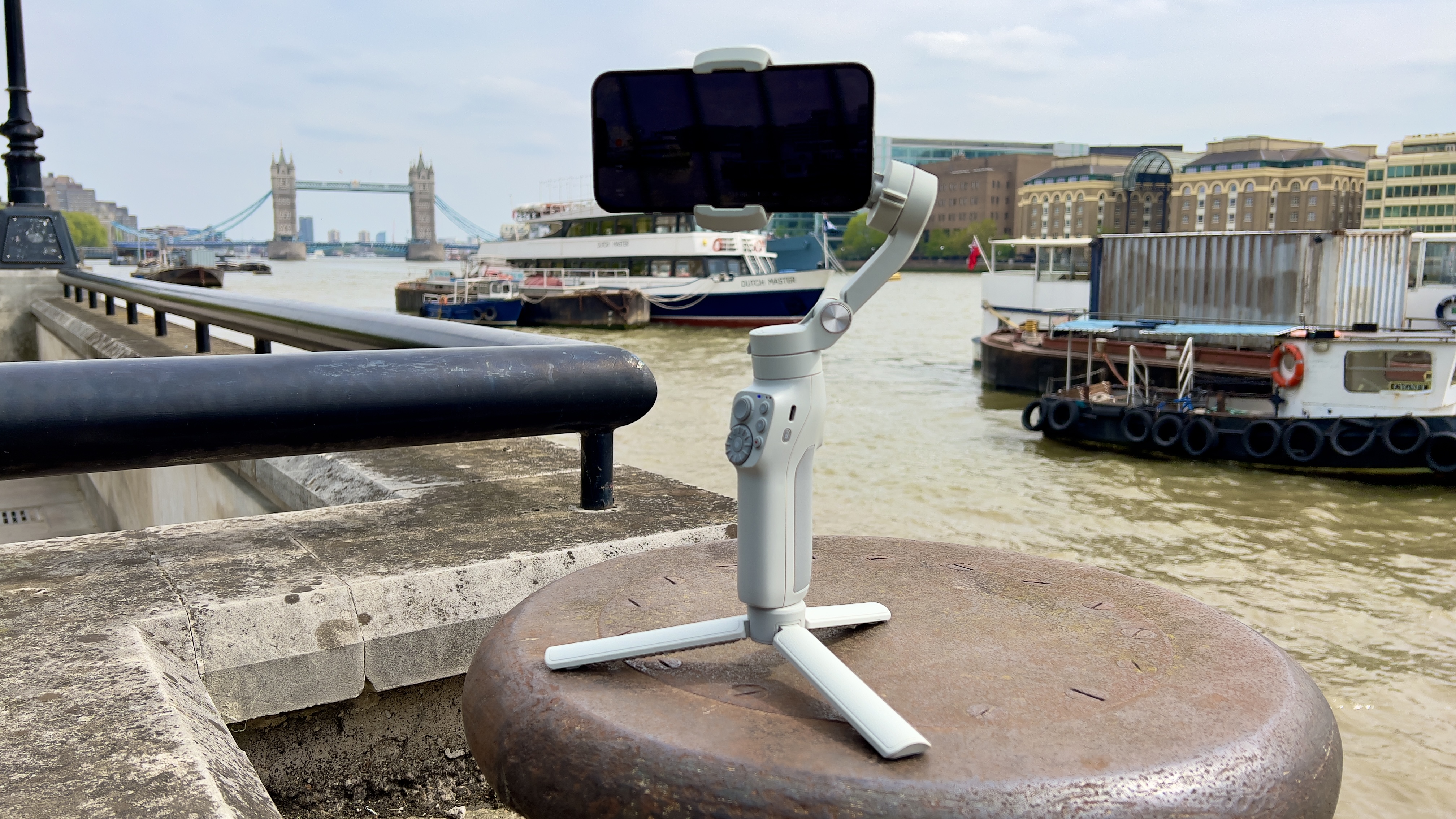
The Vimble 3 has a foldable arm that makes the gadget more compact for transporting in the supplied storage bag. You can use the thread at its base to attach the supplied mini tripod legs form hand-free use. This thread is also handy if you need to attach the gimbal to a taller tripod, or a microphone boom arm if you want to perform movie-style craning shots. Compared to the more delicate and complex Zhiyun Crane M2S, the solid plastic components of the Vimble 3 feel very robust and you’ll be less worried about damaging it.
Performance
We found the Vimble 3 very easy to set up and intuitive to use. It folds and unfolds with a satisfying click and a built-in clip enables you to mount your smartphone easily and securely. The mount also has a handy label that tells you which side of the gimbal your smartphone’s lens need to be.
The mode button and the front trigger enable you toggle between the various follow modes, though the lack of a built-in screen makes it difficult to know which mode you’ve chosen (unlike the Zhiyun Crane M2S which has a handy little built-in screen).
When we launched the free Feiyu ON app the Simple paired with it automatically, enabling us to enjoy extra app-enhanced features. By showing the app your palm you can make the gimbal start recording video for example.
We also used it to record panning timelapse sequences – with mixed results. As with the DJI OM 4 you can use an app to set start and end key frames for your panning timelapse sequence. You then choose a capture interval and a duration for the finished video. The Vimble 3 was able to capture smooth panning timelapses though it sometimes failed to finish in the precise position that we’d set, chopping off the edge of a landmark. In most cases it also failed to both pan and tilt when recording a timelapse. Hopefully this is something a firmware or app upgrade will sort out because on the whole we were pleased and impressed with its general performance.
Verdict
The Vimble 3 is a budget smartphone gimbal that enables you to make smooth pans, tilts and gliding tracking shots with your smartphone. Unlike the more complex (and around twice as expensive) Zhiyun Crane M2S, you can start using it straight out of the box as it’s much easier to balance you smartphone in its mounting clamp.
You can get up and running quickly using the free Feiyu ON app which pairs with the gimbal via bluetooth and enables you to track moving objects by drawing a rectangle round them on your smartphone’s screen. You can also use the app to for panning timelapse and hyperlapse clips which will should be attractive to stock videographers.
Read more:
• Best gimbals
• Best camera phones
• Best iPhone tripods
• Best selfie sticks
• Best iPhone microphone
George has been freelancing as a photo fixing and creative tutorial writer since 2002, working for award winning titles such as Digital Camera, PhotoPlus, N-Photo and Practical Photoshop. He's expert in communicating the ins and outs of Photoshop and Lightroom, as well as producing video production tutorials on Final Cut Pro and iMovie for magazines such as iCreate and Mac Format. He also produces regular and exclusive Photoshop CC tutorials for his YouTube channel.
